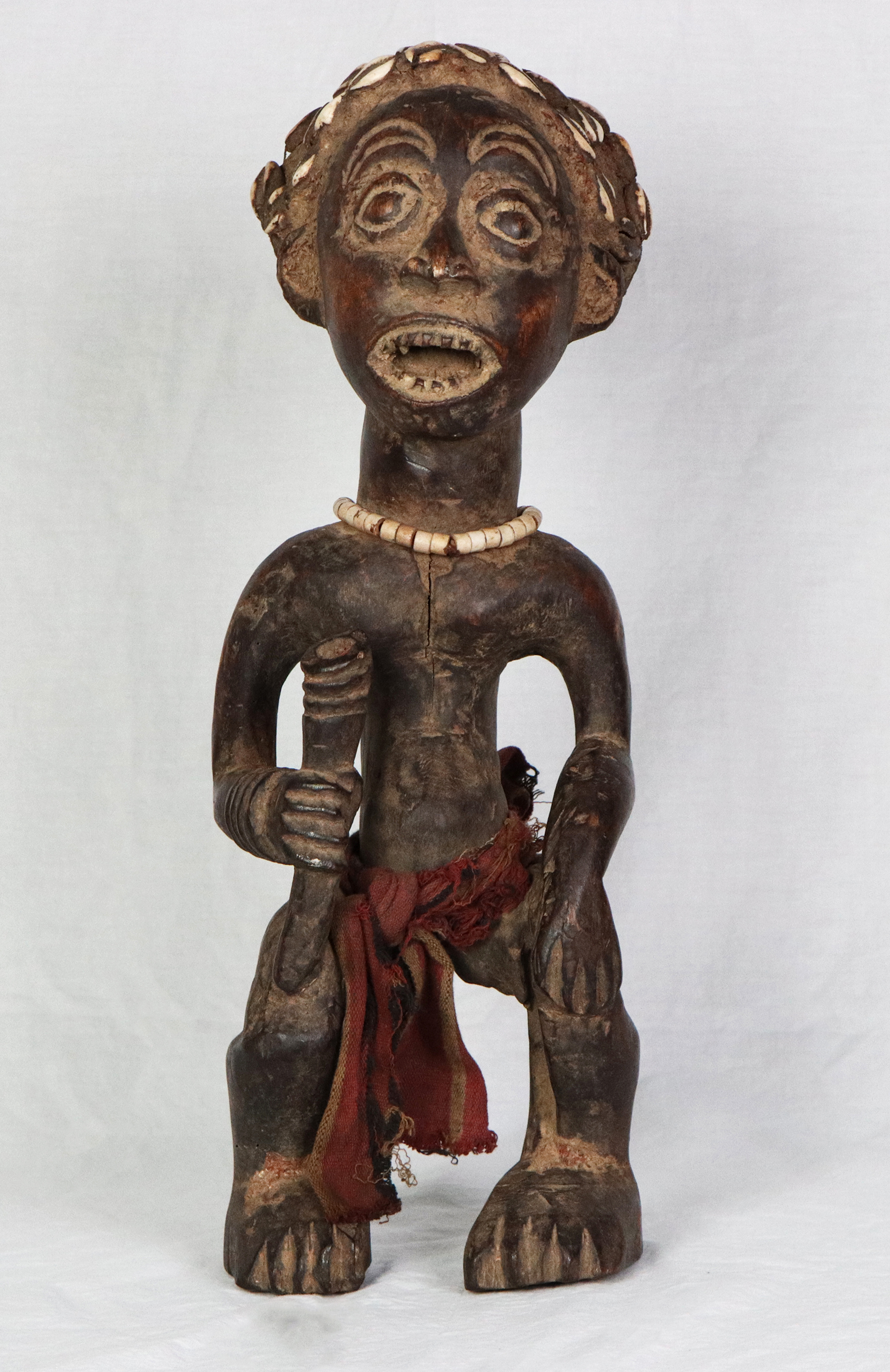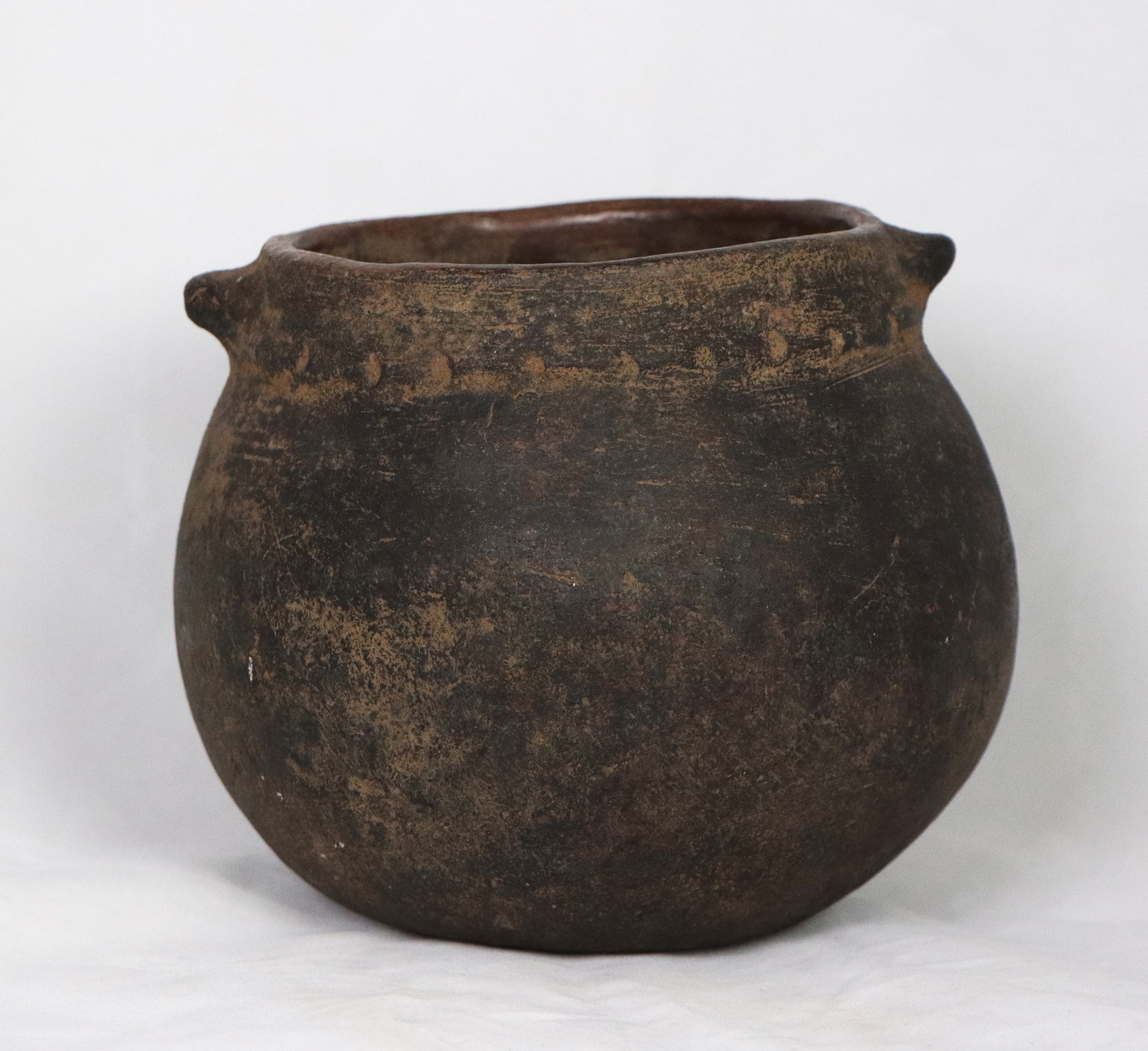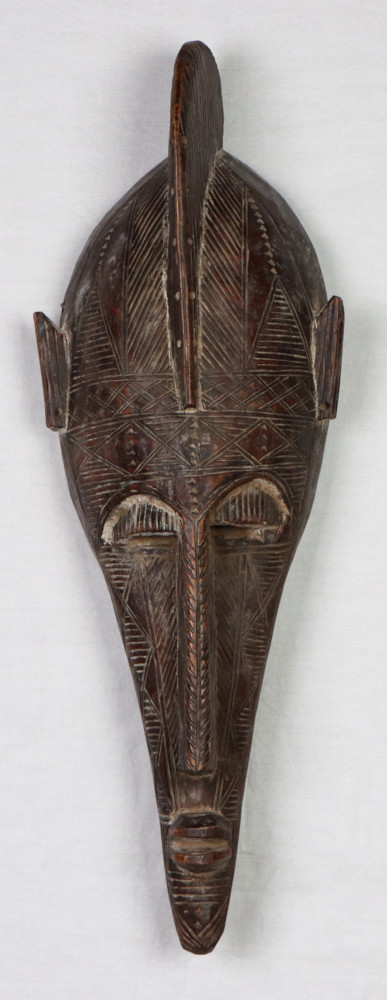In 2001 and 2003, 18 items entered the Doris Ulmann Gallery collection housed at Berea College from a New York Gallery. There were wooden masks, pieces of pottery, and a sword, among other things. There they sat peacefully for nearly 20 years. Then, in 2021, it came to light that these pieces were in fact fakes when Sadigh was arrested for forging his wares. As it turns out, Sadigh had been selling fake objects out of the art version of a Sears and Roebuck mail-order catalog for over 40 years. The gallery in New York was merely a facade for an expansive enterprise where objects were mass-produced and sent out to unsuspecting customers. When the articles came out detailing Sadigh’s crimes in early September of 2021, the Introduction to Museum Studies class, led by Dr. Meghan Doherty, wrestled with how to deal with this situation. We decided that an exhibit would be the best format to both highlight the individual objects and also the greater issues at hand. This gallery conned hundreds of buyers over the years, including ourselves. How do we address these pieces and their place in our collection?
We have sought here to think about these pieces within the framework of acknowledging that they are fakes, and also approaching them with curiosity. With research and the items at our disposal, we sought to challenge these objects. Are these pieces worth keeping in our collection? What can we learn from them?
Rate-A-Fake
Next to each object, you will find a label that is written in the style of website comments and reviews. This is done to reflect the online setting of the Sadigh Gallery and its story as well as the sketchy business practices that it followed. One of these practices was deleting negative reviews of Sadigh’s objects and paying people to write good ones. The object labels are a representation of what those deleted reviews could have looked like but in a more satirical light.
Sadigh’s objects range in accuracy. Some were done quite well and others were done horribly. The reviews will also take into account the value that the fake still holds as well as its physical accuracy. This value could include holding significance to the culture the fake is based off of, it being considered art, or it being used for teaching and education. These reviews will have a zero to five star rating, which will show the effectiveness, accuracy, and value of the fake. Visitors will also be able to participate by commenting on the reviews or leaving their own. These comments could include how effective they thought a fake was, something that they noticed about a fake, etc.
To view the sections of the exhibition, follow these links:
You have a twin!
So, when my sword came in the mail, I was confronted with the AUDACITY Sadigh Gallery’s had to send me a dupe of what I found to be a mass-produced Chinese sword giving its worst attempt at replicating what was supposed to be my antique Japanese Gendaito katana– a sword with a style from 1876-1945, with a delicately curved blade and perfectly balanced. I was even more upset when I found two more just like the one I had received, missing an important feature, the habaki, which keeps the blade in the scabbard, never to be misplaced on a traditional katana!!! It’s the fact that each of these replicas have the same SERIAL NUMBER – the NERVE of this company. They must take me for a fool.



















